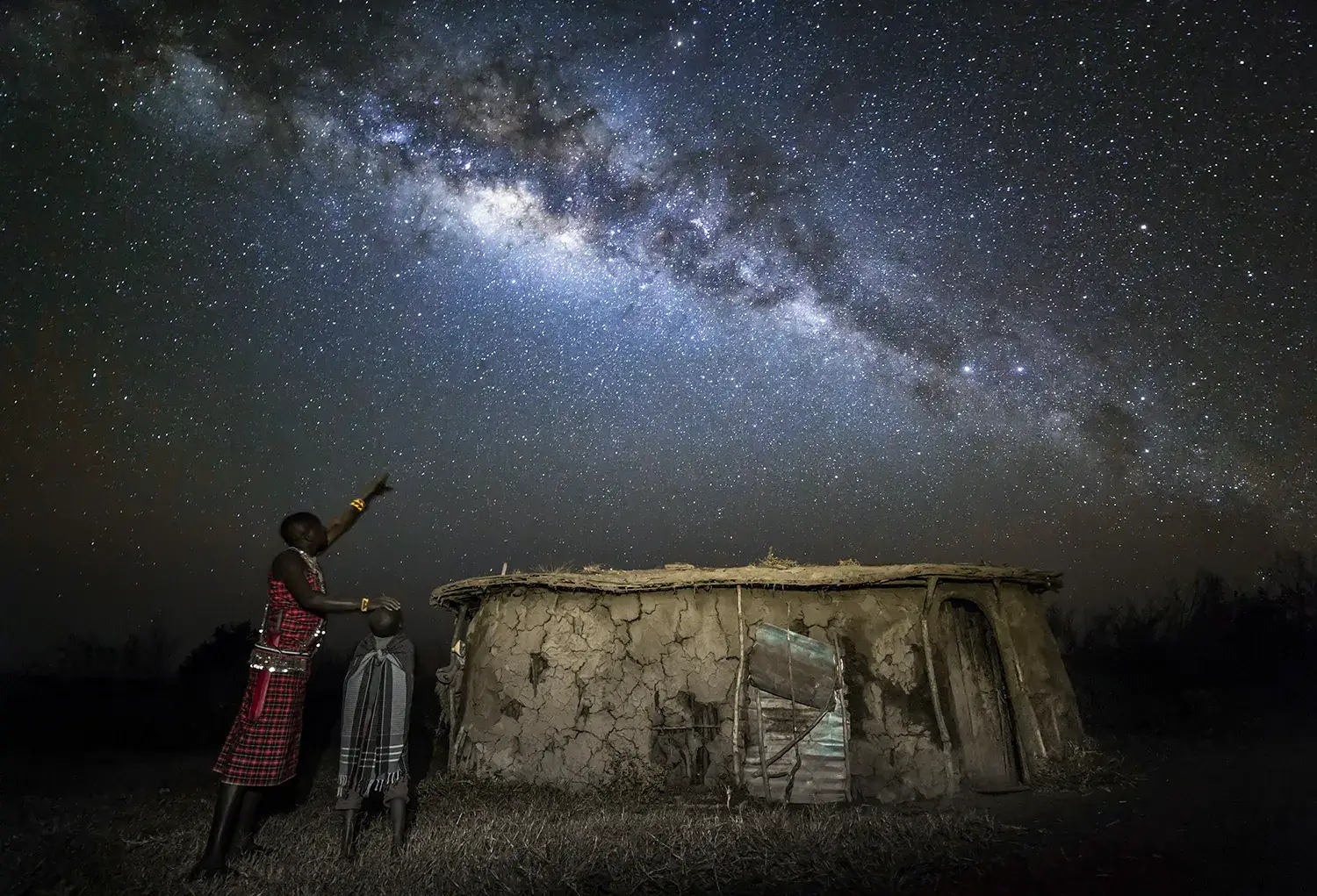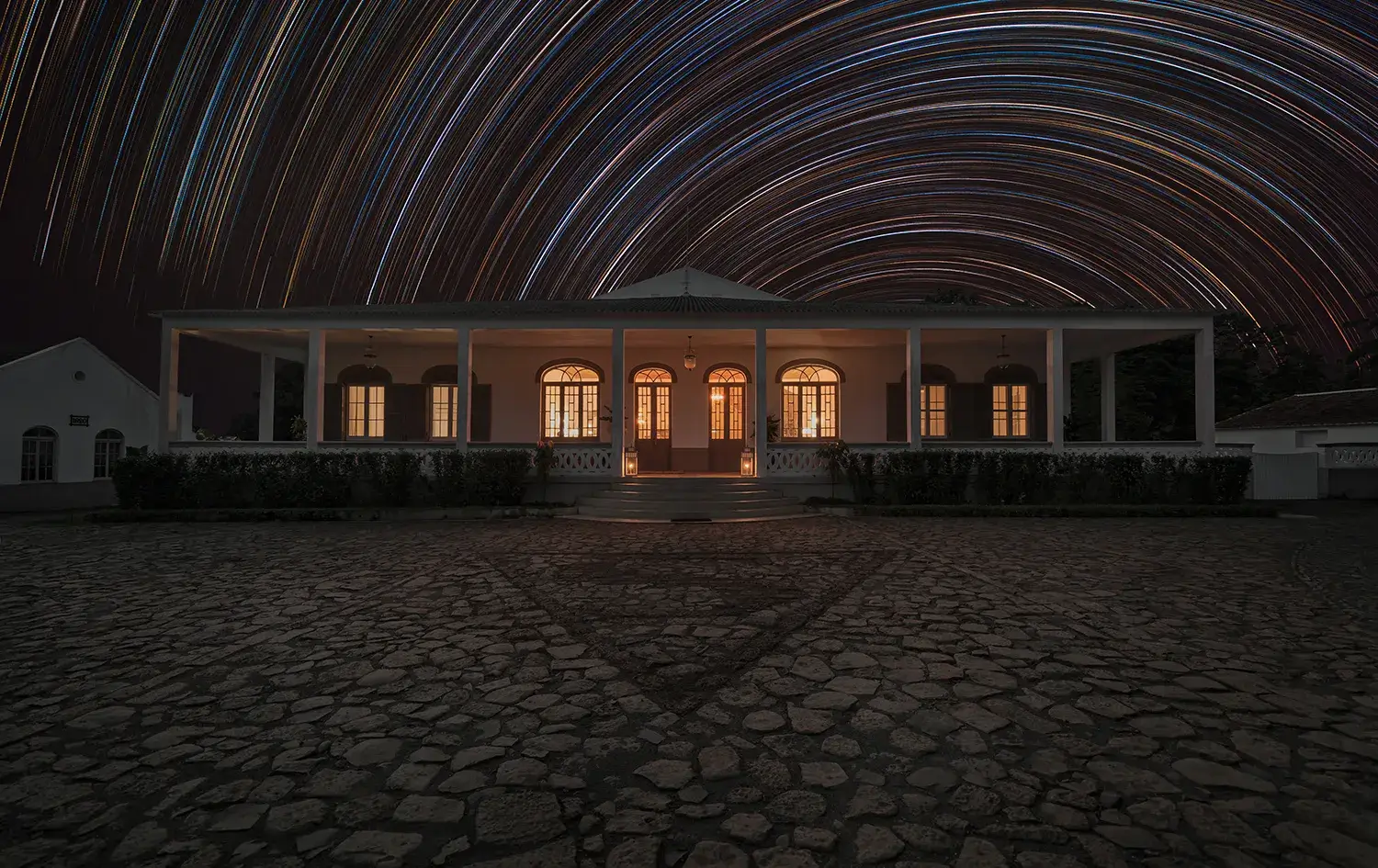
Astrophotography, to me, is about capturing the night sky and telling stories that connect nature, history, and the cosmos. My journey has taken me across continents, revealing deeper connections between Earth and the stars. Here are three images that reflect this journey, each with its own unique story, challenges, and triumphs.
A Wise Son Makes a Glad Father

A Maasai warrior teaches his son about the stars, as they enjoy the vastness of space together. At a young age, young Maasai must learn how to become a man and warrior. Insights and wisdom are passed down through the generations, so my goal was to capture on camera the moment a father shared his knowledge of the stars with his son, using the Milky Way and the setting of their semi-permanent hut as compositional elements. That was the grand plan: in reality, when I visited a Manyata (Maasai home) and sought out the perfect spot for the shot I’d planned, it just happened to be completely covered in dried-up cow excrement. It was a novel experience, lying in the dung with my camera. I feel privileged to have met the Maasai in their home—and happy I was able to capture a rare moment before their rich culture begins to fade away.
This image, titled ‘A Wise Son Makes a Glad Father,’ earned me the title of Africa Geographic’s Photographer of the Year. It was also highly commended in the Astronomy Photographer of the Year contest organized by the Royal Observatory, Greenwich.
Celestial Navigator

For many years, people have understood that the mighty African Dung Beetle (Scarabaeus Satyrus) uses the moon to steer away from rapacious competitors—eager to intercept their precious balls of neatly-rolled excrement. Yet somehow these nocturnal adventurers are able to maintain straight-line navigation on moonless nights. How? Through a series of experiments, scientists concluded that the glow of the Milky Way was sufficient to chart a path towards a safe haven. Each beetle ‘dances’ on top of its dung ball, orienting itself against a heavenly map, before setting off. The destination is a suitable spot in which to lay an egg within the dung ball. In time, the resulting larva hatches to feed on the dung before emerging to repeat the process. To capture the image, I used a preserved specimen and a blend of two exposures, photographing the foreground at blue hour and the Milky Way on a subsequent clear African night.
“Celestial Navigator” was shortlisted in the Astronomy Photographer of the Year contest organized by the Royal Observatory, Greenwich. This image stands as a reminder of the intricate ways nature and the cosmos are intertwined, illustrating how even the smallest creatures navigate their world by the light of the stars.
Roça Sundy: A Tribute to Einstein’s Legacy

In May 2018, I journeyed to Roça Sundy, Principe (in the Gulf of Guinea) to commemorate the 100th anniversary of arguably the most pivotal discovery in modern science. This was where Albert Einstein’s theory of general relativity had been definitively assessed, in 1919.
Arthur Eddington’s expedition, which spanned several months, used the 6 minutes 51 seconds May 29th solar eclipse to determine whether Einstein was correct. Eddington announced his findings on November 6th 1919, confirming the theory.
As I looked at this historic building – its colonial gravity still resonating within a Jurassic landscape – my goal was to augment its beauty with star trails, depicting time and space.
Like Eddington’s expedition, the image took years to plan but a relatively short spell to complete. I photographed the building at blue hour then captured the star trails later at night: longer than my predecessor’s six minute window, but still a relative instant in time.
Although this image did not win any awards, it remains one of my proudest shots due to the rich history it represents and the effort required to capture it. The image of Roça Sundy is a visual tribute to one of the most important scientific achievements of the 20th century.